PERIPHERAL NEUROPATHY

Peripheral Neuropathy
is a condition where the feeling in your feet or hands is abnormal. There may be tingling, or pain, or numbness. These problems often develop slowly, are irritating, and often worsen over time. The condition frequently interrupts sleep in the early hours of the morning.
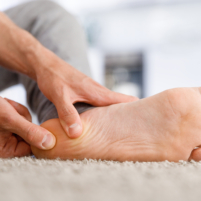
Pain, Numbness & Tingling in the Hands & Feet?
Peripheral neuropathy can be a result of damage to the nerves often causing weakness, pain, numbness, tingling, and most debilitating balance problems. This damage is now commonly caused by a lack of blood flow to the nerves in the hands and feet which causes the nerves to begin to degenerate due to lack of nutrient flow. The amount of treatment needed to allow nerves to fully regenerate varies from person to person and can only be determined after a detailed neurological and vascular examination.
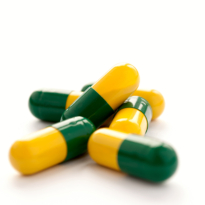
Is there a cure?
No device, drug or magic compound can legally claim to cure but there several treatments that are able to help manage and alleviate the symptoms.
What are Typical Causes?
Diabetes is a major contributor to peripheral neuropathy. Peripheral neuropathy can also result from chemotherapeutic drug use. Some genetic diseases, such as Charcot Marie Tooth involving nerve damage, also cause symptoms of peripheral neuropathy. Pain in the upper & lower extremities is a major symptom of vascular disease known as peripheral vascular or peripheral arterial disease (PVD and PAD).
What are Contributing & Controllable Factors?
Vascular disease is the leading contributing factor. In diabetic patients, vascular problems occur throughout the body. Patients suffer from vascular injury to the eyes, heart, kidney, and to the lower legs and feet themselves. If left unaddressed, poor blood flow to the feet can often lead to the formation of ulcers. In many cases, these wounds are so difficult to heal that amputation is required.
What are Typical Complications?
In addition to slow or non-healing wounds & ulcers, poor blood flow to nerves causes loss of sensation and subsequent difficulty in walking and balance. Patients might not be able to pick up a fork due to feeling loss in fingers, or are unable to sense an uneven surface while walking, or a hot surface while bathing. Imagine not being able to know whether your foot is on the brake or accelerator.
What are Typical Treatments?
Typical treatments include drugs that do not affect the vascular problems but tend to inhibit the painful symptoms. Other oral approaches involve nutritional supplements that increase blood flow. If the symptoms in the legs and feet become very severe, surgery on the blood vessels in the legs is often suggested.
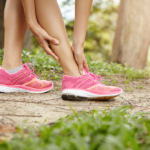
1. What is the underlying cause?
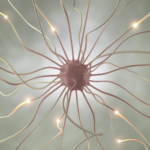
2. How much nerve damage has been sustained?

3. How much treatment will your condition require?
Ready to Start?
Click the link below book an appointment or simply learn more about our services.
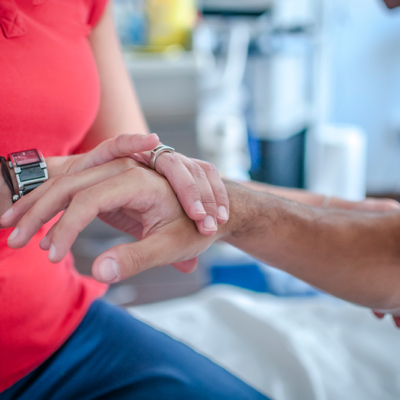
Treatment Goals:
1. Increase blood flow
2. Stimulate small fibre nerves
3. Decrease brain-based pain
Treatment to increase blood flow utilizes a specialized low-level light therapy using light-emitting diode technology
(not to be confused with laser therapy)
What is Infrared Light Therapy?
Light-emitting diodes (LEDs) are a part of medical devices that emit near-infrared (IR) light or light of various colors. IR light, unlike blue, red or yellow light, is invisible to the human eye. The IR light has been documented to dilate blood vessels at the site of treatment.
What is the Bio/ Physiological Reaction to Infrared Light?
Scientific evidence shows that IR light triggers the release of nitric oxide from blood vessels and from red blood cells at the site of treatment. Nitric oxide causes local vasodilation that lasts several hours after the treatments cease. Vasodilation improves blood flow and is useful in patients whose peripheral neuropathy is due to poor blood flow.
How does Light Therapy apply to Peripheral Neuropathy?
Improving blood flow lessens what is known as “ischemic” pain and helps nerves to begin to carry sensations again. Remember, sensory loss due to poor blood flow to nerves, is a symptom of peripheral neuropathy.
Why are there Differences in Responses?
Some patients have idiopathic neuropathy which may not respond to light therapy whereas others with vascular damage (poor blood flow) often experience relief from their symptoms.
How often is Light Therapy used?
Light therapy, by a licensed healthcare provider, is typically given for a minimum of three times a week for 8-12 weeks. Timing varies. If possible treatments can be given more frequently, and blood flow often improves more quickly with positive outcomes seen in less time.
Clinic or Home use; What is the Difference?
Clinics use devices with more power or photo energy. At-home devices use lower power for more frequent convenient use. Home units are generally used as part of the patient’s continuing therapy. A medical practitioner should advise you, as they frequently have several tools at their disposal, to help you benefit from a combination of therapies.

